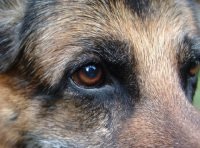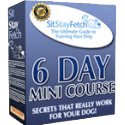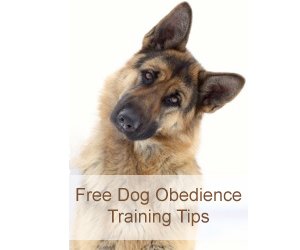FCI Breed Standards for Shepherd Dog
SV Breed Standard
Below are the FCI breed standards including German Shepherd breed info for SV registered German Shepherds.
What is FCI and SV?
FCI stands for Fédération Cynologique Internationale (World Dog Club). SV is the acronym for the German Shepherd Dog Club (Verein für Deutsche Schäferhund).
The German Shepherd breed standard was first developed in 1899 by A. Meyer and father of the breed, Captain Max von Stephanitz. They were written and agreed upon to ensure quality in the shepherd dog breed standards.
June 1997 Revisions
FCI Standard #166; replaces 23 March, 1991 edition
FCI Classification: Group 1 - Guardian and Driving dogs; Section 1 - Shepherds' dogs with working titles.
Versatile use: Guardian and Service (Working) Dog
Short historic overview: Since the official establishment in Augsburg, within the German Canine Association known as the VDH (German "Kennel Club"), the parent club of the breed, the Club for German Shepherd Dogs (SV), is responsible for the breed Standard of the German Shepherd Dog. The Standard was set up in the first membership meeting in Frankfurt on 20 September 1899, upon the suggestions of A. Meyer and M. von Stephanitz.
At the 6th membership gathering on 28 July 1901, the 23rd meeting in Köln on 17 September 1909, the conference of the executive committee and board in Wiesbaden on 5 September 1930, and the breed committee and board of directors meeting on 25 March 1961. As part of that one, the World Union of German Shepherd Dog Clubs (WUSV) was involved with the work. At the WUSV conference on 30 August 1976 they agreed on another revision, and on 23/24 March 1991 assumed full powers by way of resolution of the executive and advisory committees. [The current version was adopted in 1997.]
The German Shepherd Dog, whose systematic breeding was begun in the year 1899 with the founding of the Club, is from the former Central and Southern German stocks then available. They were bred and descended from guardian dogs with the objective of creating a working dog predisposed to high performance. To reach this goal, the breed Standard of the German Shepherd Dog was determined, with reference both to the bodily construction as well as to the essential nature and character traits.
FCI Breed Standards - (SV) General appearance
The German Shepherd Dog is a medium-size, slightly stretched, strong, and well muscled, with the "bone" dry and firm in the over-all construction. Important measurements and proportions. The withers height for males is 60 to 65 cm; that of bitches is 55 to 60 cm.* The length of torso exceeds the measure of the withers height by about 10 - 17 %.
The German Shepherd Dog must be, in its essential image, well-balanced, firm in nerves, self-confident, absolutely calm and impartial, and (except in tempting situations) amiable. He must possess courage, willingness to fight, and hardness, in order to be suitable as companion, watchdog, protector, service dog, and guardian.
FCI Breed Standards - (SV) Head
The head is to be wedge-shaped, large but in proportion to the body, with length about 40% of the dog's height at the withers, without being clumsy or overly long. It is dry in its general appearance, and moderately broad between the ears. The forehead is seen from in front and from the side to be only little arched, and without central furrow or with only a slightly implied one.
The proportion of back-skull to fore-ace is 50:50. The breadth of back-skull corresponds approximately to its length. The top of the head (seen from above) from the ears to the nose is a fairly continuous wedge-shaped taper, with a slanting but not too-sharply defined stop. Upper and lower jaws are definitely strong.
The muzzle is straight, neither a saddle shape nor an arch being desired. The lips are tight, closing well, and of dark color. The nose must be black. The teeth must be strong, healthy and complete (42, conforming to the established rule).
The German Shepherd dog has a scissors bite; i.e., the incisors must mesh in a scissors bite whereby the incisors of the upper jaw intersect like scissors with those of the lower jaw. Level (pincer), over-, and under-bites are faulty, as are large gaps between the teeth (interrupted arrangement). Likewise incorrect is a straight line of the incisors. The jawbones must be strongly developed, so that the teeth can be deeply embedded in their places.
 The eyes are medium in size, almond-shaped, somewhat slanted, and not protruding. The color of the eyes should be as dark as possible; light, piercing eyes are not desired, as this detracts from the dog's expression.
The eyes are medium in size, almond-shaped, somewhat slanted, and not protruding. The color of the eyes should be as dark as possible; light, piercing eyes are not desired, as this detracts from the dog's expression.
FCI Breed Standards - (SV) Ears
The German Shepherd Dog has pricked ears of medium size, which are carried upright and neither pointing outward nor inward; they taper to a point and are held with the opening of the shell facing forward. Tipped over and hanging ears are faulty. Ears laid back during gating and/or relaxation are not faulted.
FCI Breed Standards - (SV) Neck
The neck should be strong, well muscled, and without loose skin at the throat (dewlap). The head is held such that the neck is at an angle of approximately 45 degrees from the (horizontal) torso.
FCI Breed Standards - (SV) Body
The over-line proceeds from the neck, continuing over the high, long withers and over the straight back through the slightly sloping croup without abrupt change. The back is moderately long, firm, strong, and well muscled. The loin is broad, short, powerfully fashioned, and well muscled. The croup should be long and slightly sloping (approx. 23° from the horizontal) and without a break in the over-line as it continues over the tail-set.
The chest should be moderately broad, its underline as long as possible, and pronounced. The depth of chest should be about 45% to 48% of the dog's height at the withers. The ribs should widen out and curve moderately. Barrel-shaped chests or slab-sided appearance are equally faulty.
The tail extends at least up to the hock joint, but not beyond the middle of the metatarsus. Its hair is somewhat bushy on the underside. It is carried in a gentle hanging curve when relaxed, and is lifted more in excitement and in movement, though not over the horizontal. Surgical corrections are forbidden.;
FCI Breed Standards - (SV) Limbs Forehand
The front limbs are seen from all sides to be straight, and from the front view are perfectly parallel. Shoulder blade and upper arm are of equal lengths accumulated and firmly attached to the torso with medium-strong muscling. The angle between shoulder blade and upper arm amounts to, in the ideal case 90°, but as a rule is 110°.
The elbows, either when standing or moving, may not be turned out; likewise not pinched together. The forearms in the standing dog are seen in all views to be straight and perfectly parallel to each other, dry, and firmly muscled. The pastern has a length of approximately 1/3 that of the forearm and has an angle of approx. 20° to 22° to this.
Both a slanting pastern (more than 22°) as well as a steep pastern (less than 20°) are harmful to working suitability, particularly endurance. The paws are round, well closed and arched, the soles hard, but not inflexible. The nails are sturdy and of a dark color.
FCI Breed Standards - (SV) Hind quarters
The position of the hind legs is slightly toward the rear, and viewed from behind the hind-legs are parallel to each other. Upper thigh and lower thigh are roughly of equal length and form an angle of approximately 120°. The thighs are powerful and well muscled. The hock joints are sturdily built and firm; the metatarsus is vertical from the hock joint. The paws are closed, slightly arched, the pads hard and of dark color, the nails sturdy and arched, and also dark.
FCI Breed Standards - (SV) Movement
The German Shepherd Dog is a trotter. The limbs must be so harmonious with each other in length and angulation, that without creating much undulation of the top-line, the hindquarters can push the torso forward in such a manner that the stride matches that of the forequarters. Every tendency toward over-angulation of the hindquarters decreases the firmness and the endurance, and with that the working ability. With correct structural proportions and angulation, a far-reaching, ground-covering, level gait results, which conveys the impression of effortless forward movement. With the head thrust forward and tail slightly lifted it presents, in a fairly level, balanced, and smooth trot, one uninterrupted, gently flowing over-line from the tips of the ears over the nape and back, through to the end of the tail.
FCI Breed Standards - (SV) Skin
The skin is (loosely) contiguous without, however, forming folds.
FCI Breed Standards - (SV) Coat
Condition of the hair
The correct type of hair-coat for the German Shepherd Dog is the Stock-hair (straight, harsh topcoat) with undercoat. The topcoat should be as tight as possible, straight, harsh, and lying closely and firmly. On the head between the ears, on the front side of the legs, and on paws and toes it is short. At the neck somewhat longer and more abundant. On the backs of the legs the hair grows longer as far down as the wrist, and correspondingly down to the hock. At the backside of the thighs it forms moderate trousers.
Colors
Black with reddish-brown, brown, tan, and/or light gray markings. Solid-black. Sable with dark overcast. Black saddle and mask. Inconspicuous, small white chest markings, likewise light color on the insides, are allowed but not desirable. The nose bulb must be black in all colors of the breed. Missing mask, light (piercing) eye color, as well as light to whitish markings at chest and under/inner sides, light claws, and red-tipped tail are to be considered as deficient pigment. The undercoat has a light gray color. The color white is not permitted.
FCI Breed Standards - (SV) Size/weight*
Males: Withers height 60 cm to 65 cm; weight 30 kg to 40 kg
Females: Withers height 55 cm to 60 cm; weight 22 kg to 32 kg
Testicles
Dogs should display two evidently normally developed testicles, situated in the scrotum.
Faults
All deviations from the above-mentioned points should be considered as errors, the severity of fault appraisal being strictly in proportion to the degree of the deviation.
Major Faults
Anything that departs from the Standard and known characteristics of the breed in relation to the suitability for work;
Ear faults:
Held out to the side; low-set; tipped over; overset (tipped toward each other); weak; Considerably lacking in pigment; Considerable deficiency in overall firmness.
Dentition faults:
All deviations from the scissors bite and the formation of the teeth that are not dealt with in the following list of specific faults.
Disqualifying Faults (also ineligible for breed survey):
- a) Weak character, biting, nervous;
- b) Demonstrated severe hip dysplasia
- c) Cryptorchidism (unilateral or bilateral), clearly unequal or stunted, atrophied testicles;
- d) Deformed ears or tails;
- e) Dogs with deformities;
- f) Dentition faults involving the absence of: one P-3 and another tooth, or one fang (canine), or one P-4, or one Molar-1 or Molar-2, or any total of three or more teeth;
- g) Incisor (bite) irregularities: overshot by 2mm or more, undershot, or pincer bite (even or level in entire incisor area);
- h) Oversize by more than one centimeter;
- i) Albinism;
- j) White haircoat even if the dog has dark eyes and nails;
- k) Langstockhaar (topcoat long, straight, soft, not lying tightly; with undercoat present; flags (feathering) on ears and legs, bushy trousers, bushy tail with formation of flags on the underside);
- l) Langhaar (topcoat long, soft; without undercoat, generally parting in the middle of the back; flags at ears, legs, and tail).
*Dogs are 60-65 cm (23.6 to 25.6 inches) and 30-40 kg (66-88 lbs.); bitches 55-60 cm (21.6 to 23.6 inches) and 22-32 kg (481/2 to 701/2 lbs.).
FCI Breed Standards translated by Fred Lanting, SV Conformation Judge
Reprinted from Schutzhund USA Magazine






